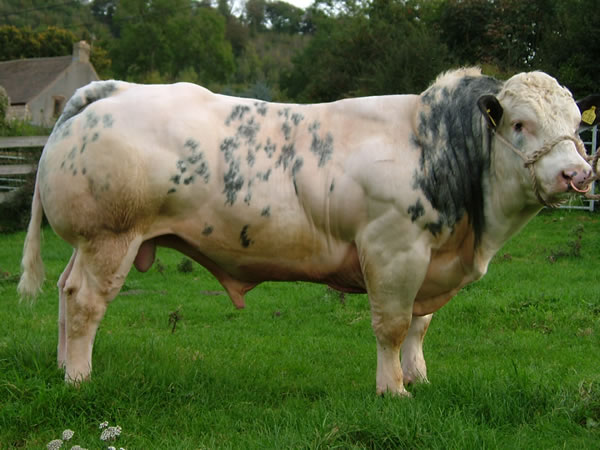Type the name of the breed you're looking for below
[wpdreams_ajaxsearchlite] Don't see the breed your're looking for? Click here and let us know!
Belgian Blue Cattle
| Place of Origin | Belgium |
| Origin | The condition was first documented in 1808 by a livestock observationist named George Culley. The breed originated in central and upper Belgium in the nineteenth century, from crossing local breeds with a Shorthorn breed of cattle from the United Kingdom. It is also possible that Charolais cattle were cross bred as well. Belgian Blue cattle were first used as a dairy and beef breed. The modern beef breed was developed in the 1950s by Professor Hanset, working at an artificial insemination centre in Liege province. The breed's characteristic gene mutation was maintained through linebreeding to the point where the condition was a fixed property in the Belgian Blue breed. In 1978 the Belgian Blue cattle were introduced to the United States through a man by the name of Nick Tutt, a farmer from central Canada who immigrated to west Texas showing surrounding universities of this cattle. |
| Purpose | They are used primarily for meat. |
| Appearance | The Belgian Blue's sculpted, heavily muscled appearance is known as "double-muscling". The double-muscling phenotype is a heritable condition which results in the increased number of muscle fibers (hyperplasia) rather than the normal enlargement of individual muscle fibers (hypertrophy). The Belgian Blue is named after their typically blue-grey mottled hair colour, however its colour can vary from white to black. |
| Horns | Naturally horned. |
| Other Considerations | Breed issues; Double-muscled cows can experience dystocia (a difficult birth), even when bred to normal beef bulls or dairy bulls, because of a narrower birth canal. In addition to the dam’s reduced pelvic dimensions, the calf’s birth weight and width are increased, making parturition harder. The neonatal calf is so large that Caesarean sections are routinely scheduled for breeders. The bull’s testicular weight and semen quantity and quality have been observed as reduced, however this seems to be less of an issue when compared to the dam's difficulties in calving. Economic efficiency; The economics of breeding and raising Belgian Blue cattle are inconclusive because of complications experienced during parturition and metabolic demand for increased concentrated feeds. The breed's increased need to have Caesarean sections when calving means increased cost and added work, and can become a welfare issue. However, the carcass value of double-muscled animals may be enhanced due to increased dressing yield, lean carcass content, and upgrading of some cuts leading to a higher proportion of higher valued cuts. The slower rate of fat deposition causes slaughtering to be delayed in most cases, which means an increase in maintenance costs in those animals. Belgian Blue cattle require more skilled management and do not thrive in harsh environments. For these reasons and others, the breed's overall production efficiency in an economic sense is still unclear. |



